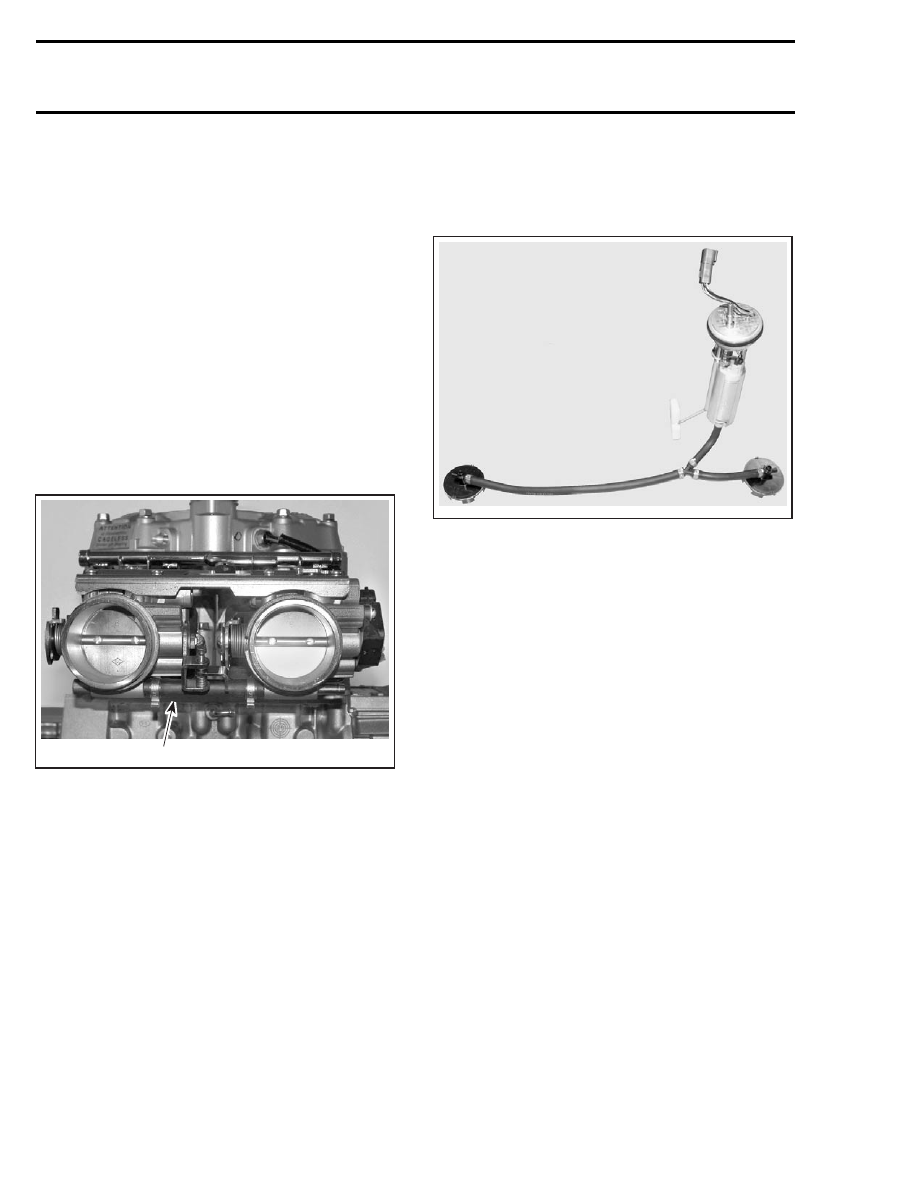Snowmobile Ski Doo REV SERIES (2004 year). Manual - part 45

Section 05 2–TEC ENGINE MANAGEMENT
Subsection 01 (OVERVIEW)
OPERATING PRINCIPLE
For this SDI 2-stroke engine, a highly advanced en-
gine management system (EMS) has been used to
ensure a high power output combined with clean-
est combustion. An ECM (Engine Control Mod-
ule) calculates the proper air/fuel mixture and igni-
tion timing for each cylinder separately. The fuel
is injected into the transfer port of each cylinder.
AIR INDUCTION
Through air filter mounted LH side panel, air goes
into air silencer. The ECM measures at this point
air pressure and temperature. Then, air for com-
bustion is drawn through two throttle bodies. The
air flow is controlled by two throttle plates. The air
continues through the reed valves into the cylinder
base then the crankcase.
1
A32C8PA
THROTTLE BODY ASSEMBLY
1. Coolant-heated line
FUEL DELIVERY SYSTEM
GENERAL
When the piston reaches the correct position,
the ECM opens the fuel injectors and fuel is dis-
charged into the transfer ports of cylinders. This
air/fuel mixture is then ignited by the spark plug.
COMPONENT DESCRIPTION
Fuel Pump and Fuel Pressure Regulator
They provide fuel pressure and flow rate to the
system.
The fuel pump module is located inside the fuel
tank. The module includes the fuel pump, the fuel
pressure regulator and the fuel level sensor (if so
equipped).
A33I06A
The fuel pressure regulator controls the pressure
in the system and allows the excess of fuel to
return to the fuel tank. The fuel pressure regulator
regulates the fuel pressure at 400 kPa (58 PSI).
Fuel Rail
The fuel rail is a small tube on which the four in-
jectors are mounted. It ensures at all times that
enough fuel at the right pressure can be delivered
to the fuel injectors. The fuel rail is fed by the fuel
pump module.
Fuel Injectors
Fuel injectors (two per cylinder) are used to inject
fuel into the transfer port of cylinder.
Throttle Body
It is a dual throttle body mounted on the engine in-
take side. Fitted on this dual throttle body, there
is a TPS (Throttle Position Sensor) that sends in-
formation to the ECM.
Fuel Pickups
The two fuel pickups come with 70 micron filter.
One is located at the front right side of the fuel
tank and the other at the rear left side.
166
mmr2004-Rev